'Everyone knows everyone else': Life on one of Denmark's smaller islands

It can be isolating and socially challenging, but foreigners say that the sense of community you get on Denmark's smaller islands make them some of the best places to live in the country.
We heard from four foreigners who have moved to the islands of Samsø, Fanø, and Als, about what life is like on their respective islands.
Fanø
Teddy Hayward came to Denmark for love, and since his Danish girlriend is from the island of Fanø, just off the west coast of Jutland, that's where he moved, arriving just before the start of the Covid-19 pandemic.
Even though the island is just 12km from the port town of Esbjerg, with ferries running several times an hour at peak times, Hayward says the community of 3,500 people is quite special, with islanders still dressing up in traditional clothing in the summer.
"It's quite isolated. There's a lot of people that are born and raised and live on Fanø and will stay here till the day they die, so it's its own little community," he says.
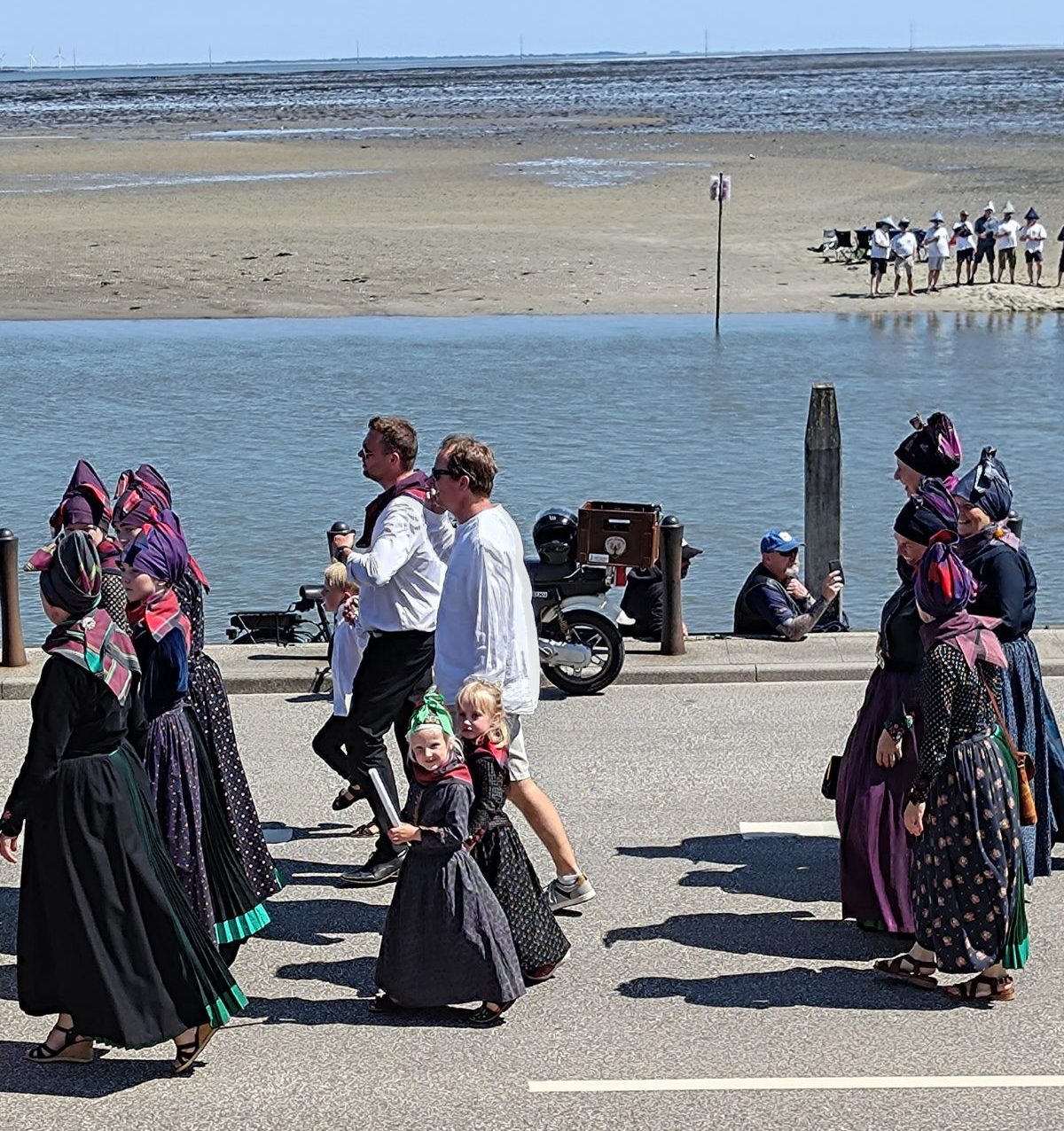
People take part in a summer parade in traditional Fanø dress. Photo: Teddy Hayward
Even so, he hasn't found it hard to settle.
"I think they're pretty open. I was quite lucky in that my girlfriend is from the island, so I automatically had people through her friendship group and family. There are people that know me as 'the English brewer' who I haven't actually met. But I think if you just moved to Fanø and didn't know anyone, it could be quite difficult to integrate."
Hayward worked as a brewer in London and got a job on the island before he moved, after befriending an American who works at the local Fanø Bryghus brewery during a visit to visit his girlfriend's family.
"Moving from central London to Fanø is quite a scary task, but personally, I'd say that I don't miss London. I miss the people, but not the place. The move was definitely worth it for my well-being and mental health. I feel a lot less anxious, a lot less stressed out, living on Fanø."

Teddy Hayward (with beard) and colleagues at the Fanø Bryghus brewery. Photo: Fanø Bryghus/Instagram
Part of that is due to the nature that surrounds him.
"I can see the sea from my window and there's nothing quite like finishing work and then going for a swim in the sea. There are deer and rabbits all over the island that come into the garden, and you can just walk into the forest and lose yourself."
There's a big contrast between the summer, when holiday-makers flood in to spend their time in the holiday houses that crowd the island's coastline, and the winter, when it's very quiet and the wind coming off the North Sea is punishing.
"It's just a sandbank so it's completely flat basically and you just get the wind right in the face," he says. "It can get pretty bad. The wind chill factor in the winter can make it feel like -6C or -7C."
Samsø
When Alexandra Elmquist and her husband Paul had their twins six years ago, they knew their days on a London canal boat were numbered, and four years ago, they moved to Samsø.
For Elmquist, who is half-Danish and half-English, this meant being closer to her parents, who split their time between France and the north of Zealand, but for her husband it was a bigger move.
"It's been tough for him, for sure. It wasn't the easy move that we had expected," she says. "He's never lived anywhere other than England, whereas I've lived in many countries and I understand that you've got to spend a couple of years before you adjust."
The move has been easiest for the girls, who she says "absolutely love it", and are "so happy with the school that we've chosen".
"It's really fun for them because any event that you go to, they always see their friends, because, like, everyone is always at every event."
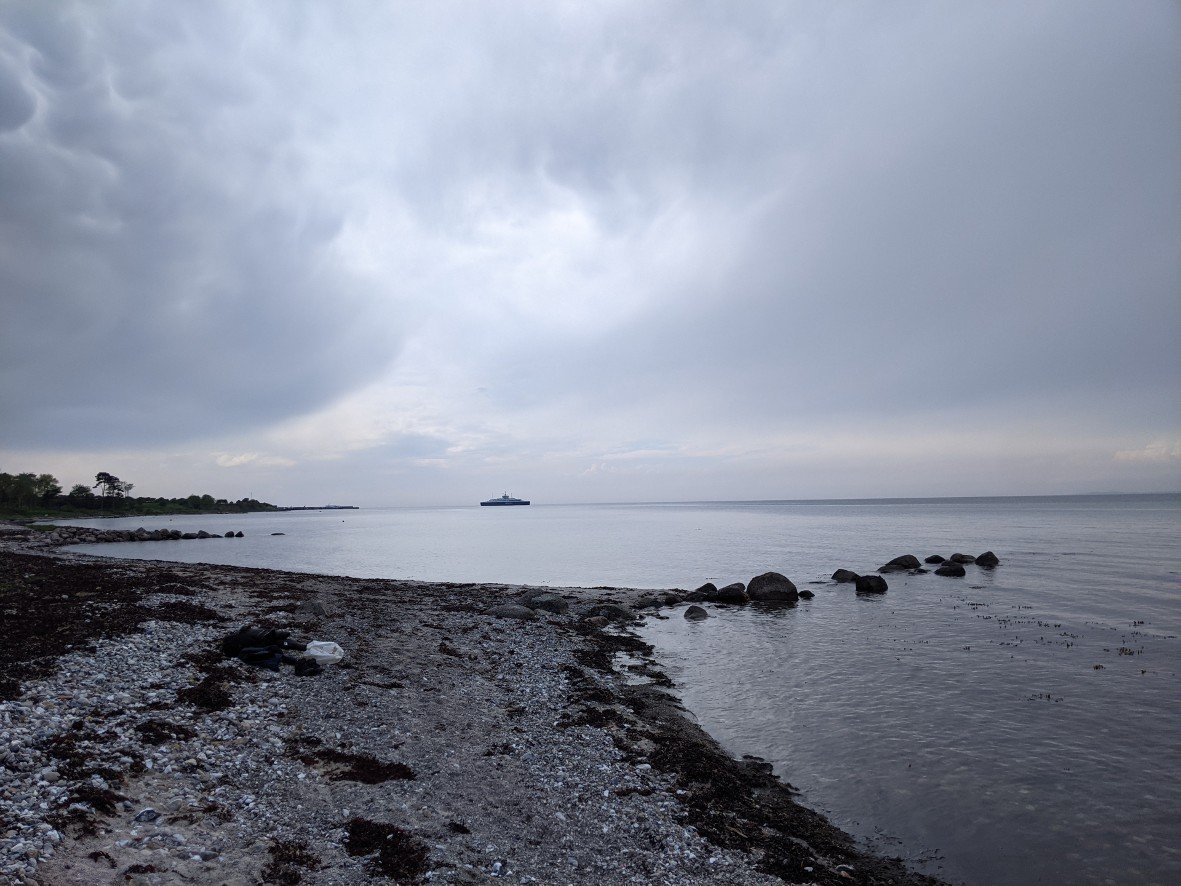 On Samsø, you are rarely far from a beach. Photo: Alexandria Elmquist
On Samsø, you are rarely far from a beach. Photo: Alexandria Elmquist
Elmquist herself has also fallen on her feet. After a summer waiting tables, she got a job at Samsø's only multinational, which makes dental equipment.
"I fully expected it was going to be a sacrifice and that I would take a step down in my career, but it actually ended up being a good career move."
Paul started off harvesting potatoes, then worked for a gardening company, and is now in the process of starting up the island's second bicyle repair shop.
Socially, there's a mix of born-and-bred islanders and more recent arrivals from elsewhere, with their children's class of ten including pupils who are half-English, half-American, half-German and half-Israeli.
"It's more mixed here than it is in the rest of Denmark," she says.
The number of newcomers has increased even since she arrived.
"Around the time of Covid, there was a large influx of new arrivals, especially families with young children, so it's definitely changed, I think for the better, because there was a bit of an old world vibe going on when we first came."
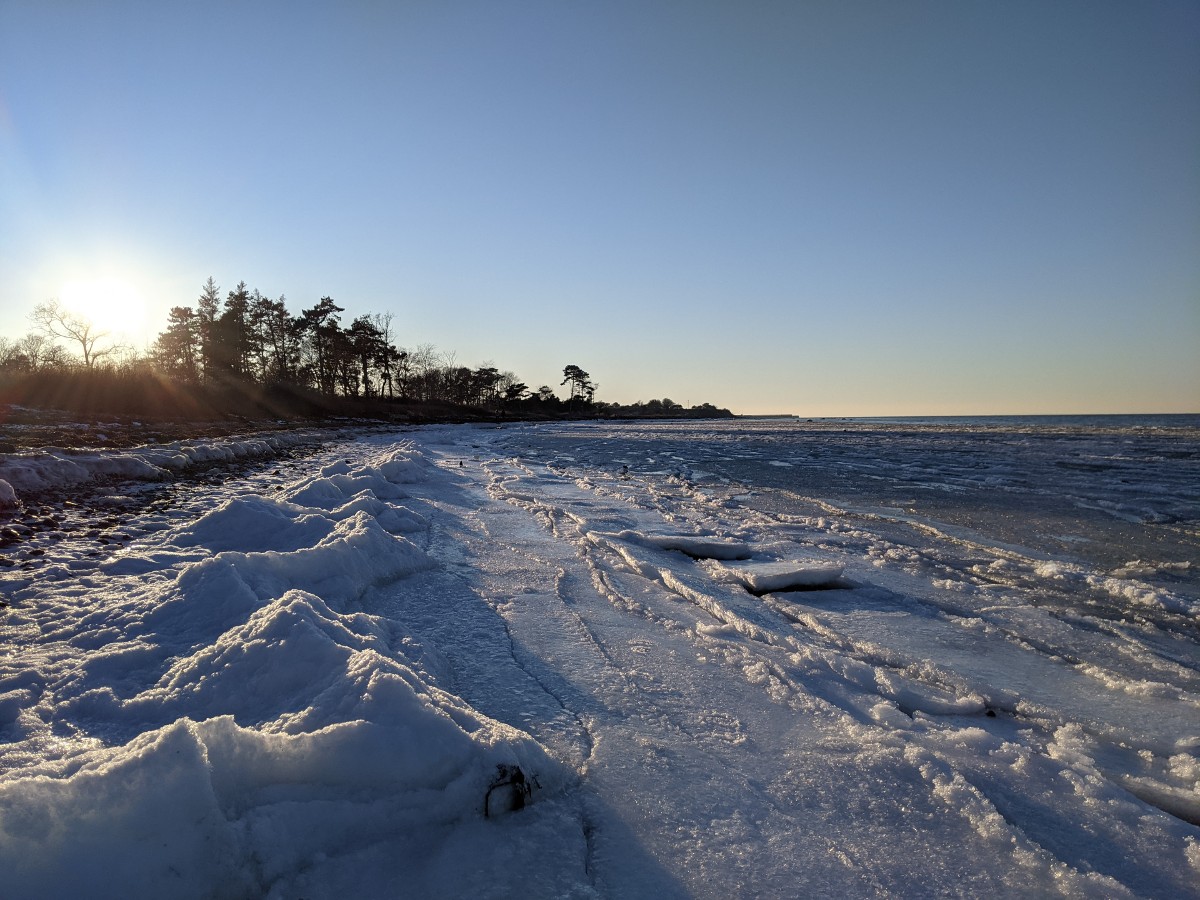 Samsø can get chilly in the winter. Photo: Alexandria Elmquist
Samsø can get chilly in the winter. Photo: Alexandria Elmquist
Some of the born-and-bred islanders do keep to their own, she admits. "The lady that lives next door, she's never even greeted us". But her islander colleagues at work have become friends, and generally she thinks making friends is less of a challenge than elsewhere in Denmark.
"You make friends a lot more easily here because you kind of have to," she says. "People know who you are and there is only the people that there are, and if you're not friends with them, then you haven't got any friends, so for that reason, people are more open. It's one of the things that makes living in a small community really nice."
Samsø aims to be completely carbon-free by 2030, and living a greener life was part of the draw for the couple.
"In the countryside, you normally have to drive quite far to get to the shops or whatever, but on an island you're geographically constrained, so we can get anywhere we need to by bike, which is what we wanted," she says, although she feels the realiity doesn't quite live up to the Samsø marketing hype.
"They've got some windmills and there's the Energy Academy, but, but other than that, people don't seem to have a huge interest in going green. You've still got a lot of two-car families."
Four years on though, she has yet to tire of island life.
"I love being always so close to the ocean and I sort of fell in love with the sunrises every day here," she told The Local. "I don't get bored of the nature here."
She also likes the fact that Samsø is strategically placed between Denmark's two main cities, with a fast ferry whisking you to Aarhus in an hour, and only a slightly longer journey to the north of Zealand.
She does, however, struggle with the rougher winter climate, particularly when storms shut down the ferries. "We do get some really strong winds, and when one or two of the ferries are cancelled, it can give you a little bit of island jitters."
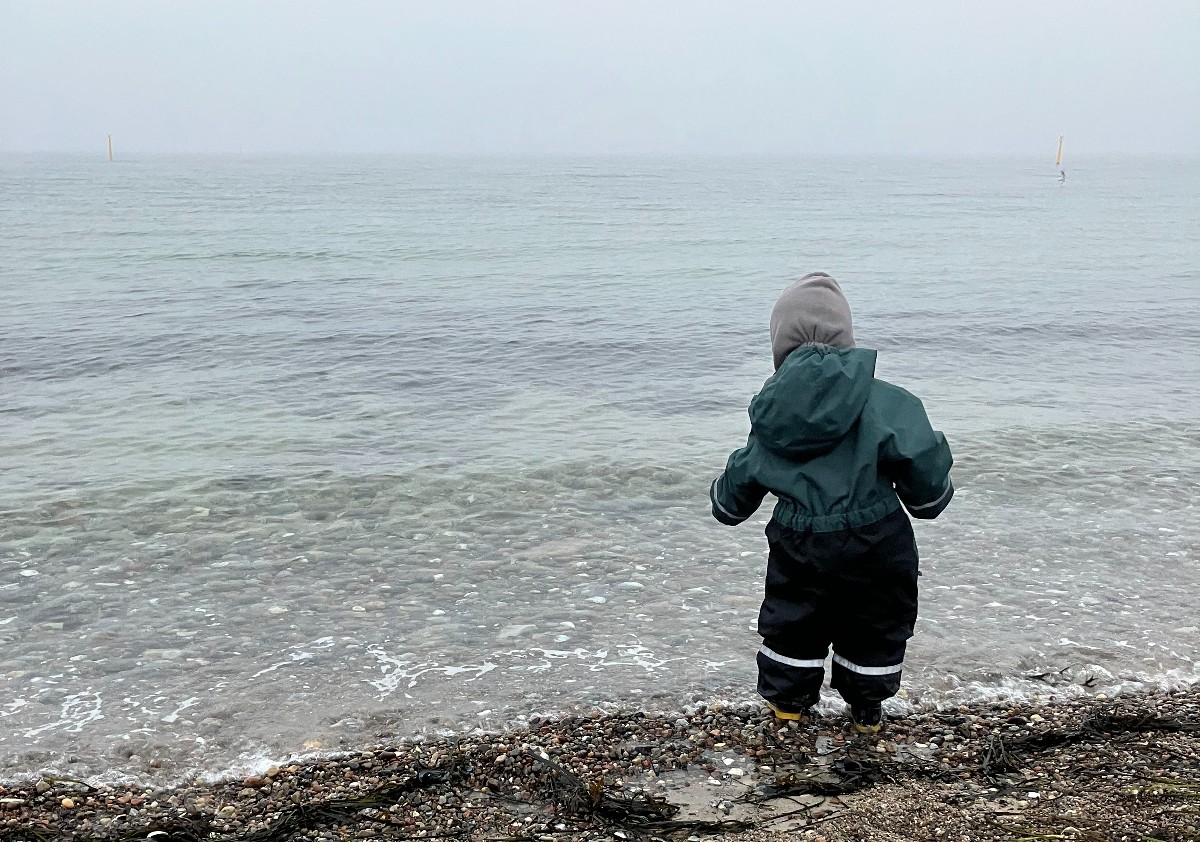
Minette and Willum Wisser's child enjoying the beach on the island of Als. Photo: private
Als
Minette Visser and her husband Willum moved to Denmark from South Africa because she wanted to use her engineering skills to help the environment. Back home, all the jobs were either in mining or designing military equipment.
"We read a book called The Almost Nearly Perfect People and it kind of convinced us to choose Denmark, so then I started applying for jobs here," she remembers.
She got a job at the Danish industrial conglomerate Danfoss, and that brought her to Sønderborg on the island of Als.
"It’s very peaceful. I live within walking distance of a beautiful beach and a forest - both are a balm to my soul," she says of the island, which is connected to Jutland by several bridges over the narrow strait.

Minette Visser could not really cycle when she arrived in Denmark but now regularly cycles to nearby towns on Als.
Photo: private
"We are always sort of laughing about it, because where we lived before, it's 75 milometres between Pretoria and Johannesberg, and it's completely built up. You have to drive 100 kilometers before you get into rural areas. But it's six kilometres between where we live and Augustenborg, where there's an artist community, and you go through a bit of rural area."
Minette finds people "very friendly" in general, although she has found colleagues tend not to invite her to social events outside of work.
"I'm quite introverted and shy so that doesn't help, but I've joined an English book club which was started by two Danish people, and that's been really interesting to get to know them that way."
Her partner, meanwhile, has met people at the language school where he's studying Danish.
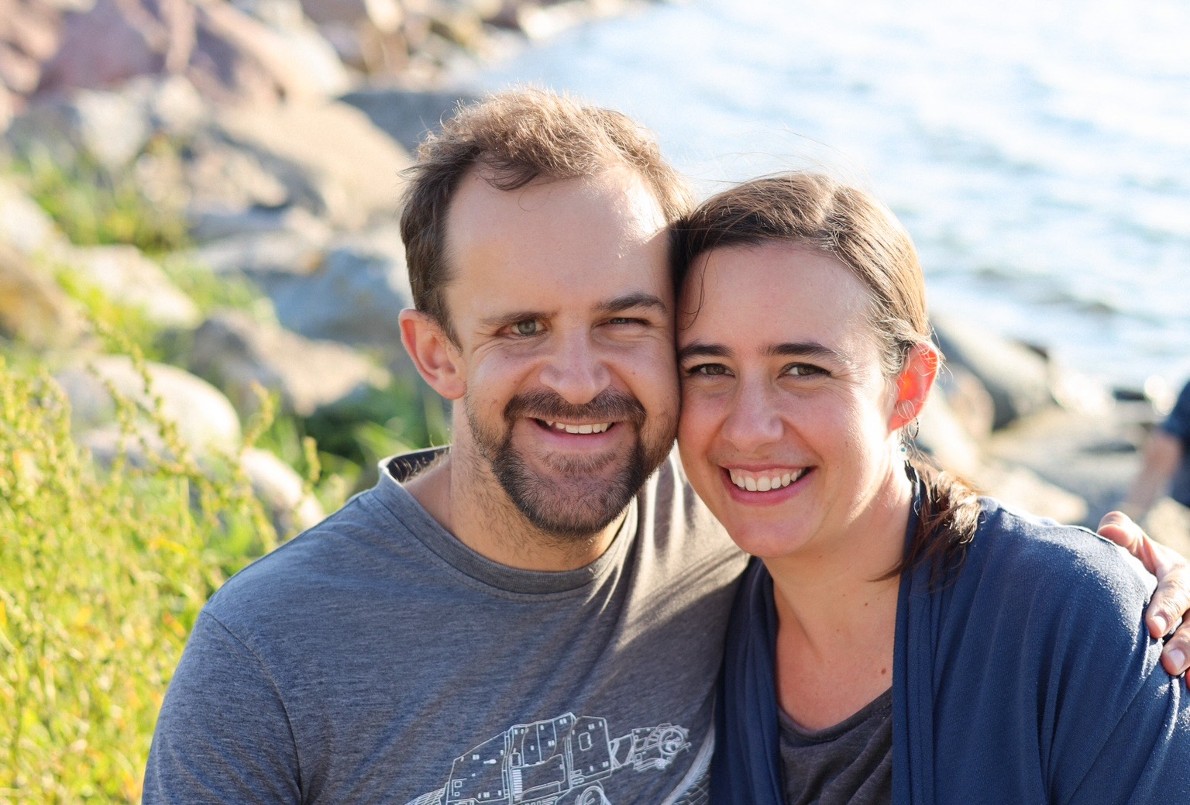
Minette Wisser and her husband Willum enjoying being outside on the island of Als. Photo: private
Comments
See Also
We heard from four foreigners who have moved to the islands of Samsø, Fanø, and Als, about what life is like on their respective islands.
Fanø
Teddy Hayward came to Denmark for love, and since his Danish girlriend is from the island of Fanø, just off the west coast of Jutland, that's where he moved, arriving just before the start of the Covid-19 pandemic.
Even though the island is just 12km from the port town of Esbjerg, with ferries running several times an hour at peak times, Hayward says the community of 3,500 people is quite special, with islanders still dressing up in traditional clothing in the summer.
"It's quite isolated. There's a lot of people that are born and raised and live on Fanø and will stay here till the day they die, so it's its own little community," he says.

Even so, he hasn't found it hard to settle.
"I think they're pretty open. I was quite lucky in that my girlfriend is from the island, so I automatically had people through her friendship group and family. There are people that know me as 'the English brewer' who I haven't actually met. But I think if you just moved to Fanø and didn't know anyone, it could be quite difficult to integrate."
Hayward worked as a brewer in London and got a job on the island before he moved, after befriending an American who works at the local Fanø Bryghus brewery during a visit to visit his girlfriend's family.
"Moving from central London to Fanø is quite a scary task, but personally, I'd say that I don't miss London. I miss the people, but not the place. The move was definitely worth it for my well-being and mental health. I feel a lot less anxious, a lot less stressed out, living on Fanø."

Part of that is due to the nature that surrounds him.
"I can see the sea from my window and there's nothing quite like finishing work and then going for a swim in the sea. There are deer and rabbits all over the island that come into the garden, and you can just walk into the forest and lose yourself."
There's a big contrast between the summer, when holiday-makers flood in to spend their time in the holiday houses that crowd the island's coastline, and the winter, when it's very quiet and the wind coming off the North Sea is punishing.
"It's just a sandbank so it's completely flat basically and you just get the wind right in the face," he says. "It can get pretty bad. The wind chill factor in the winter can make it feel like -6C or -7C."
Samsø
When Alexandra Elmquist and her husband Paul had their twins six years ago, they knew their days on a London canal boat were numbered, and four years ago, they moved to Samsø.
For Elmquist, who is half-Danish and half-English, this meant being closer to her parents, who split their time between France and the north of Zealand, but for her husband it was a bigger move.
"It's been tough for him, for sure. It wasn't the easy move that we had expected," she says. "He's never lived anywhere other than England, whereas I've lived in many countries and I understand that you've got to spend a couple of years before you adjust."
The move has been easiest for the girls, who she says "absolutely love it", and are "so happy with the school that we've chosen".
"It's really fun for them because any event that you go to, they always see their friends, because, like, everyone is always at every event."

Elmquist herself has also fallen on her feet. After a summer waiting tables, she got a job at Samsø's only multinational, which makes dental equipment.
"I fully expected it was going to be a sacrifice and that I would take a step down in my career, but it actually ended up being a good career move."
Paul started off harvesting potatoes, then worked for a gardening company, and is now in the process of starting up the island's second bicyle repair shop.
Socially, there's a mix of born-and-bred islanders and more recent arrivals from elsewhere, with their children's class of ten including pupils who are half-English, half-American, half-German and half-Israeli.
"It's more mixed here than it is in the rest of Denmark," she says.
The number of newcomers has increased even since she arrived.
"Around the time of Covid, there was a large influx of new arrivals, especially families with young children, so it's definitely changed, I think for the better, because there was a bit of an old world vibe going on when we first came."

Some of the born-and-bred islanders do keep to their own, she admits. "The lady that lives next door, she's never even greeted us". But her islander colleagues at work have become friends, and generally she thinks making friends is less of a challenge than elsewhere in Denmark.
"You make friends a lot more easily here because you kind of have to," she says. "People know who you are and there is only the people that there are, and if you're not friends with them, then you haven't got any friends, so for that reason, people are more open. It's one of the things that makes living in a small community really nice."
Samsø aims to be completely carbon-free by 2030, and living a greener life was part of the draw for the couple.
"In the countryside, you normally have to drive quite far to get to the shops or whatever, but on an island you're geographically constrained, so we can get anywhere we need to by bike, which is what we wanted," she says, although she feels the realiity doesn't quite live up to the Samsø marketing hype.
"They've got some windmills and there's the Energy Academy, but, but other than that, people don't seem to have a huge interest in going green. You've still got a lot of two-car families."
Four years on though, she has yet to tire of island life.
"I love being always so close to the ocean and I sort of fell in love with the sunrises every day here," she told The Local. "I don't get bored of the nature here."
She also likes the fact that Samsø is strategically placed between Denmark's two main cities, with a fast ferry whisking you to Aarhus in an hour, and only a slightly longer journey to the north of Zealand.
She does, however, struggle with the rougher winter climate, particularly when storms shut down the ferries. "We do get some really strong winds, and when one or two of the ferries are cancelled, it can give you a little bit of island jitters."

Als
Minette Visser and her husband Willum moved to Denmark from South Africa because she wanted to use her engineering skills to help the environment. Back home, all the jobs were either in mining or designing military equipment.
"We read a book called The Almost Nearly Perfect People and it kind of convinced us to choose Denmark, so then I started applying for jobs here," she remembers.
She got a job at the Danish industrial conglomerate Danfoss, and that brought her to Sønderborg on the island of Als.
"It’s very peaceful. I live within walking distance of a beautiful beach and a forest - both are a balm to my soul," she says of the island, which is connected to Jutland by several bridges over the narrow strait.

Photo: private
"We are always sort of laughing about it, because where we lived before, it's 75 milometres between Pretoria and Johannesberg, and it's completely built up. You have to drive 100 kilometers before you get into rural areas. But it's six kilometres between where we live and Augustenborg, where there's an artist community, and you go through a bit of rural area."
Minette finds people "very friendly" in general, although she has found colleagues tend not to invite her to social events outside of work.
"I'm quite introverted and shy so that doesn't help, but I've joined an English book club which was started by two Danish people, and that's been really interesting to get to know them that way."
Her partner, meanwhile, has met people at the language school where he's studying Danish.

Join the conversation in our comments section below. Share your own views and experience and if you have a question or suggestion for our journalists then email us at [email protected].
Please keep comments civil, constructive and on topic – and make sure to read our terms of use before getting involved.
Please log in here to leave a comment.